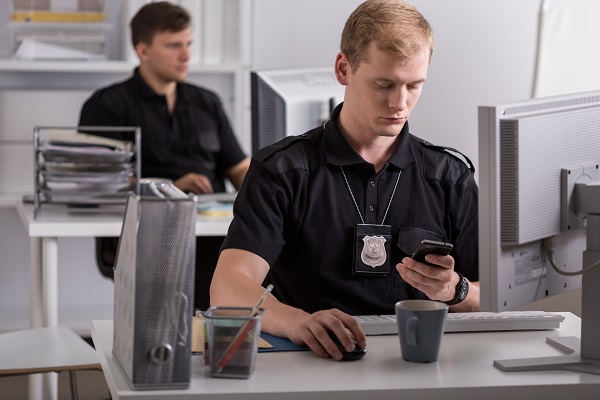As we gear up for this year’s International Association of Chiefs of Police Conference (IACP 2018), we take a closer look at the top incident reporting challenges law enforcement professionals face on a day-to-day basis.
The most valuable use of a police officer’s time is actively spent – actively patrolling and protecting communities, solving and closing cases, and sharing mission-critical information. Heavy reporting demands can seriously slow down such dynamic operations, often at the expense of other policing priorities.
Each day law enforcement professionals face reporting challenges, all of which have huge implications for responsibilities both in and out of the police station. As we look towards the upcoming International Association of Chiefs of Police Conference (IACP 2018), where we will be exhibiting and showcasing our powerful police reporting solutions, we wanted to take a moment to address the top incident reporting challenges we will be discussing with professionals at this year’s event.
1. Time-consuming reporting demands limit officer visibility
Law enforcement officials recognize and respect the role accurate documentation plays in their job, but today’s reporting processes can be unproductive and labor-intensive. According to a recent national survey of police departments, almost 40% of officers revealed that incident reporting and other documentation tasks can take 3-4 hours to complete, resulting in a quarter of their day dedicated solely to paperwork. This is time officers can’t put toward protecting the communities they serve and can radically limit their visibility. For this reason, many departments attending conferences like IACP will be looking at the new tools available that can help reduce administrative burdens and get officers back to what matters most – protecting and serving the community.
2. Choosing between speed and accuracy
Police paperwork is integral to moving court proceedings along, and can even determine criminal convictions. As such, it’s crucial that police reports and other documents related to proceedings are completed not only quickly, but accurately. As transparency in policing has become a bigger priority in recent years, reporting carries even more importance. The question facing officers, then, is how do they document time-sensitive information, where each detail holds significance, without sacrificing speed or specificity? More and more departments are relying on new solutions, such as voice-powered speech recognition tools, to help officers dictate information in real-time, while the details are still fresh in their mind, resulting in more thorough, accurate reports.
3. Outdated systems lead to officer safety issues and poor ergonomics
In the survey, just over half of the respondents cited dissatisfaction with legacy Computer Aided Dispatch (CAD) and Records Management Systems (RMS) and expressed interest in new solutions to help. Outdated interfaces make these systems difficult to use, plus the effort to navigate them can even cause physical discomfort; hunched over in their patrol cars, officers must twist and turn to type and search for data, often resulting in lower back, wrist and neck pain. More seriously, when officers are operating these systems, they’re forfeiting their situational awareness by being heads-down and not connected to their surroundings, making them more vulnerable to ambush attacks or accidents. It’s not surprising then that many departments continually seek solutions that will help improve safety and not hamper it.
4. Siloed technology delays the sharing of mission-critical information
Current police reporting tools need to be overhauled and innovated. Legacy CAD/RMS systems are siloed, making it a challenge to connect officers and their command staff to vital details. In emergency situations when lives are on the line, this information cannot be held up. Incorporating intelligent voice-powered technologies, like Dragon Law Enforcement, for instance, make it not only more convenient and faster to help search for and document mission-critical information, but for public safety officials, who need to spend the majority of their time attuned with their surroundings, it’s also safer. They can capture, document and share information within the CAD/RMS by voice, all while staying heads-up and situationally aware.
Clearly, officers face many challenges in doing their jobs day-to-day and helping to keep communities safe. Police paperwork shouldn’t be one of them.






